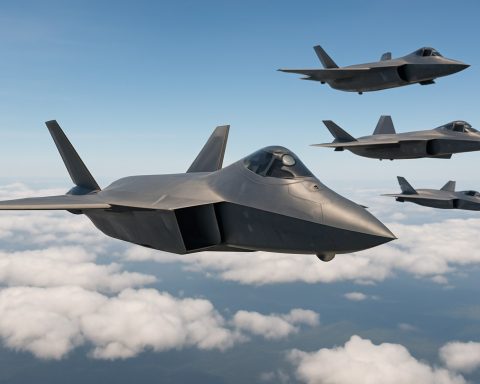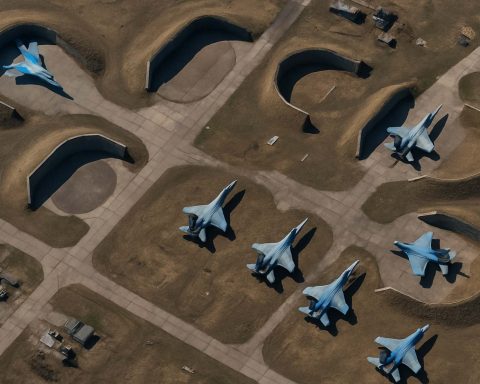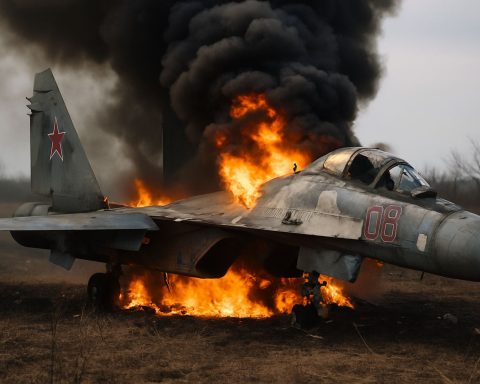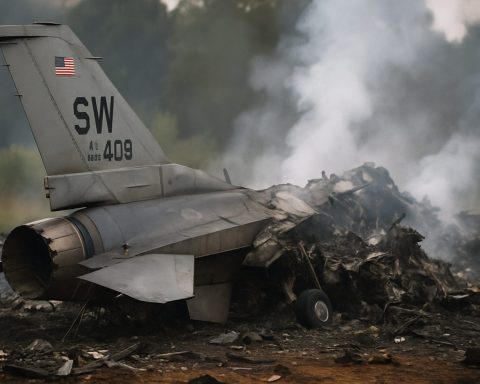- Algeria has quietly acquired Russian Su-35 fighter jets, enhancing its military capabilities.
- Satellite imagery reveals this development at Ain Beida Air Base, with the Su-35 originally intended for Egypt but redirected to Algeria.
- This acquisition signifies Algeria’s strategic intent to bolster its defense capabilities, building on its existing Russian military technology, including Su-30s and rumored Su-57s.
- The Su-35’s advanced avionics and maneuverability offer significant defensive and offensive advantages to Algeria.
- This military move reflects concerns over NATO’s past intervention in Libya and coincides with Iran’s anticipated Su-35 delivery, highlighting complex international negotiations.
- The presence of Su-35s in Algeria suggests a shift in regional power dynamics, establishing Algeria as a key African air power.
- The geopolitical implications require Algeria to carefully balance its military expansion with international diplomacy.
Against the stark desert backdrop of North Africa, whispers of Algeria’s burgeoning military capabilities ripple across international defense circles. Satellite imagery, the impartial eye from space, now fuels speculation that Algeria has quietly expanded its air fleet to include the powerful Russian Su-35 fighter jets.
A curious flash of color on the tarmac at Ain Beida Air Base caught the analytical gaze of the International Institute for Strategic Studies (IISS). This lone sentinel, an Su-35 Flanker-E, originally destined for Egypt, signals a strategic shift. Egypt’s last-minute withdrawal, spurred by fears of American sanctions, left Russia seeking new buyers for its advanced combat aircraft—and Algeria appears to have seized the opportunity.
Algeria, already a prominent operator of Russian military technology with its Su-30s and rumored Su-57 stealth acquisitions, now reportedly adds the combat-proven Su-35 to its arsenal. The aircraft’s mere presence suggests a quiet transaction, neither confirmed nor denied by Algiers or Moscow. This silence echoes the tense air of geopolitical maneuvering.
With the Su-35 joining the fray, the implications are manifold. The robust fighter jet promises to enhance Algeria’s defensive and offensive capabilities significantly. Armed with sophisticated avionics and exceptional maneuverability, the Su-35 stands as a guardian in the skies. The move underscores Algeria’s strategic intent to bolster its military might, reflecting lingering anxieties over NATO’s 2011 intervention in neighboring Libya.
Intriguingly, this development coincides with Iran’s anticipated Su-35 delivery, raising eyebrows about possible re-routing. Despite Iran’s confirmed order, the slow trickle of jets to Tehran hints at complex international negotiations. Tensions simmer beneath the surface, as allies and adversaries alike scrutinize Russia’s export decisions.
The arrival of the Su-35 in Algeria could herald a new era of African air power. Algerian pilots have reportedly trained in Russia, preparing to wield this aerial juggernaut. Should the Su-35 and the elusive Su-57 both become fixtures in Algerian hangars, the balance of power in North Africa would indelibly tilt.
For Algeria, the stakes are high. This strategic purchase reinforces its air superiority and cements its role as a pivotal regional player. As geopolitical winds shift, the nation must navigate the complexities of international diplomacy, ensuring its growing military capabilities align with both national defense priorities and the broader regional order.
In an era marked by fluid alliances and shifting power structures, Algeria’s military procurement strategy exemplifies the delicate dance of global politics. As the eyes of allies and adversaries alike remain fixed on the desert nation, the silent flight of the Su-35 through Algerian skies speaks louder than words.
Algeria’s Strategic Su-35 Acquisition: Implications and Insights
Growing Military Might: Algeria’s Su-35 Acquisition
Algeria’s acquisition of the Russian Su-35 fighter jets signifies a significant advancement in its military capabilities. This move not only enhances Algeria’s aerial strength but also underscores a strategic intent to project power and safeguard sovereignty amidst regional tensions.
Key Features and Specs of the Su-35:
1. Advanced Avionics: The Su-35 is renowned for its cutting-edge avionics, which include advanced radar systems and electronic warfare capabilities.
2. Maneuverability: The aircraft boasts superior agility due to its thrust-vectoring engines, providing enhanced dogfighting capabilities.
3. Weaponry: Equipped with an array of missiles and bombs, the Su-35 is suitable for both air-to-air and air-to-ground combat scenarios.
Strategic Implications for North Africa
Algeria’s fleet expansion with the Su-35 potentially shifts the balance of power in North Africa. This move positions Algeria as a key military power in the region, able to influence regional security dynamics significantly.
Comparing the Su-35: A Global Perspective
– Versatility: The Su-35’s versatility makes it a formidable opponent against its Western counterparts like the F-15 and Eurofighter Typhoon.
– Cost-Efficient: Offering capabilities similar to fifth-generation fighters at a lower cost, the Su-35 is economically attractive for countries seeking to bolster their military without overwhelming budgets.
Market Trends and Industry Forecasts
The demand for fighter jets like the Su-35 is expected to remain robust, driven by geopolitical tensions and countries’ desires to modernize their air forces. Russia’s ability to find markets for its military hardware, particularly in Africa and Asia, will influence the global arms trade landscape significantly.
Geopolitical Ramifications
1. Regional Stability: Algeria’s enhanced air power might act as a deterrent to regional conflicts or could escalate arms races with neighbors.
2. Diplomatic Balancing Act: Algeria must navigate its alliances carefully, balancing relations with Russia while avoiding tensions with Western powers.
3. Impact on US Relations: Similar transactions prompted US sanctions under CAATSA, which could complicate Algeria’s relations with Washington.
Pros and Cons of Algeria’s Military Expansion
Pros:
– Enhanced national security and deterrence capabilities.
– Greater influence in regional and international affairs.
– Strengthened air force with training and operational readiness.
Cons:
– Potentially strained relationships with Western countries.
– High costs associated with maintenance and pilot training.
– Risk of escalating regional arms races.
Actionable Recommendations
For other nations considering similar military purchases, here are some steps and considerations:
1. Cost-Benefit Analysis: Evaluate the long-term financial implications of procuring advanced military hardware.
2. Training Investments: Ensure comprehensive training programs for pilots and maintenance crews to maximize operational effectiveness.
3. Diplomatic Strategy: Develop a balanced international relations strategy to mitigate risks of alienating trading partners or inciting sanctions.
In conclusion, Algeria’s procurement of the Su-35 fighter jets is a landmark decision that carries both opportunities and challenges. As this strategic maneuver unfolds, the impact on regional dynamics, diplomatic relations, and military strategy will be closely monitored by global observers.
For more insights on military technology and strategic analyses, you can explore International Institute for Strategic Studies (IISS).









